I played the Rage 2 E3 demo four times in a row, and it got better (and smarter) every time. Here’s what I learned
There’s more to Rage 2 than brilliant, high-speed ultraviolence. Not that that's not great, mind...
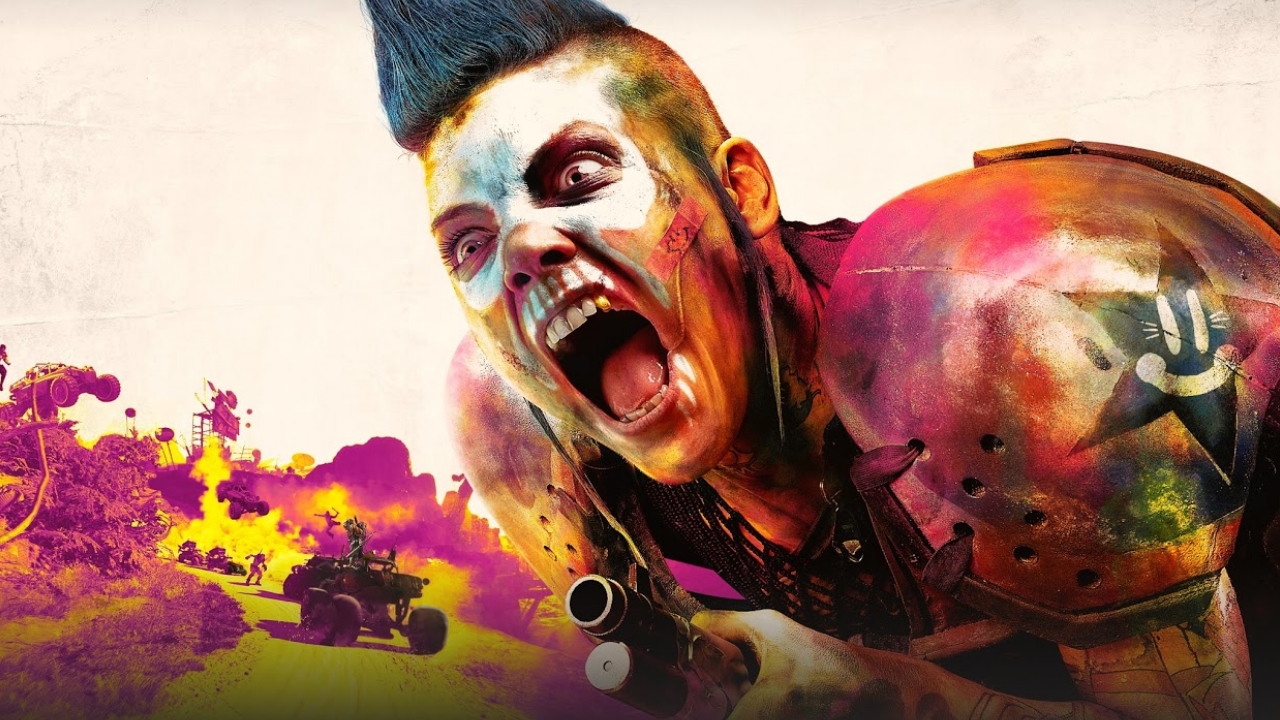
I’m standing still at the entrance to a corridor, waiting for a very special enemy to emerge at the other end. He’s not a boss or anything like that. Just a well-armoured goon who I know to be the sole inhabitant of this part of Rage 2’s E3 demo. His appearance though, has become a bit of a stand-out moment. As our familiarity has grown, I’ve named him Greg.
We’ve danced this dance before, Greg and I, and we’ll dance it again before long. Going hands on with Id Software and Avalanche Studios’ anarchic, post-apocalyptic, open-world FPS a few weeks before E3, I have time to play the demo more than once. In fact I end up playing it through four times in a row, and oh boy, do I discover some things as a result. Rage 2, you see, while immediate and instantly fun, is a shooter with serious layers. With each play-through, I come to understand it on a new level, its various moving parts becoming clearer in their purpose, and the bigger picture of Rage 2’s hollering, yet quietly intelligent, FPS rampage coming into more exciting focus. I’ll explain Greg’s particular part in these learnings a little later, but for now, let’s start this Rage 2 run-down with the fact that…
It’s a close cousin of Doom
This is the first and most obvious thing I realise when starting up loop one of my repeat journey through the Rage 2 demo. It’s also the first of many things that make me do The Big, Contented Grin. There are to be many of those things, but this is the first. The instant I push forward to approach the entrance to the enemy enclave ahead of me, rattling forward at no unimpressive pace, Rage 2 feels very much like an Id shooter. But it specifically feels like an Id shooter using Doom 2016 as its philosophical foundation. That notion beds down and makes itself thoroughly at home as I start strafing around the outside of the base in order to pick a tactically favourable breach point. I strafe even faster than I was running. Clearly, this is a game with in-fight manoeuvrability at the forefront of its mind. I will do well here.
Launching into combat, by tactically sprinting toward my tactically-chosen incursion point, while tactically hurling a grenade at a couple of unaware goons and opening my assault rifle up on two more and an explosive barrel as the tactical gibs rain down, I see the way this is going, and I like it. Or rather, I feel the way this is going. There’s a very particular vibe and pace to a good Id shooter, a kinetic, rhythmic back-and-forth of attack and evasion, as enemy movements, evasive necessity, and aggressive opportunities ebb and flow in constant motion. It’s a perpetually shifting set of elasticated connections that demands non-stop, improvisational movement as player, AI, and environment systematically influence each other until the last bad guy drops. Or explodes. And Rage 2 is fuelled by it, 100%
But this isn’t just an open-world do-over of Doom, because…
Airborne and vertical combat are a bigger deal than you’re expecting
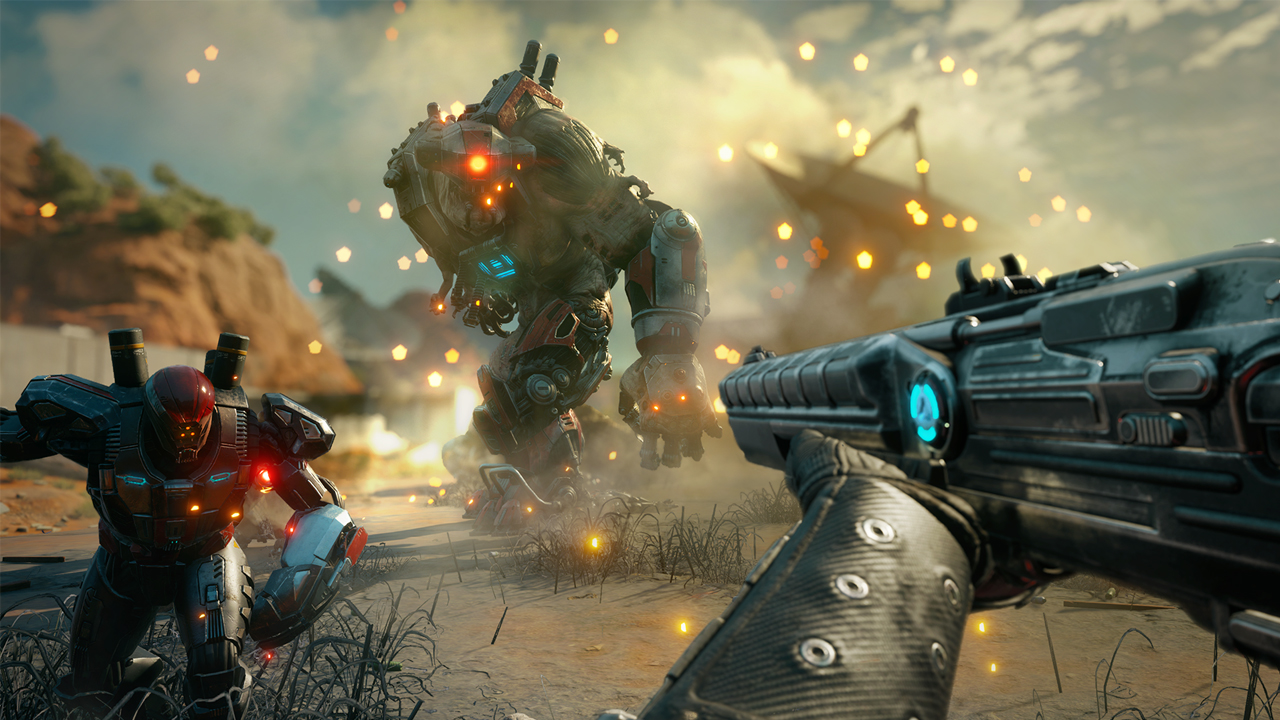
Doomguy is no slouch in the air. This is inalienable, scientific fact. Between the fluid bunny-hops, soaring double-jumps, and instant, crate-climbing mantles introduced in Doom 2016, gaming’s least diplomatic Marine is far more dexterous than he used to be. But Rage 2 takes things a mid-air step further. As well as the above Doom-moves, Rage 2 furnishes a rapid horizontal dash on a short cooldown, which launches me in any direction I choose, at bone-crushing speed. It might sound like a small addition, but it’s a game-changer once I realise that all of my basic movement abilities can be chained and combed in and out of it in any order I want.
Forward-dash into a double-jump, to close a big gap to shotgun-range in minimal time? Totally doable, but that’s the basic stuff. As I play, experiment, and iterate on my approach to each fight over my multiple plays of the demo, my sense of Rage 2’s combat scope continually expands. Within an hour I’ve evolved from early, naïve, training-wheels ferocity to full-blown, omnidirectional chaos. I can jump off a shipping crate toward a goon and blow his face off with my shotgun, because of course I can. But from there I can interrupt my jump with an air-dash to rapidly change direction, scooting sideways to evade First Goon’s friends and attack another group.
Sign up to the GamesRadar+ Newsletter
Weekly digests, tales from the communities you love, and more
If I’m fast, I can then tag a delayed double-jump on to the end of that air-dash, to throw off the enemy’s aim as I come in blazing. I can then drop out of the air and tag their heaviest unit with the staggering (and sometimes head-exploding) Wingstick tracking boomerang as I use my other hand to pepper the group with machine gun fire, circle-strafing around to their side before I jump-dash again to get clear of their retaliatory fire and get a better shot at that sparking power cell behind them. But while the grand-scale acrobatics of Rage 2’s greater combat sweep are a dizzying good time, further experimentation reveals some serious depth in even the smallest confrontations. Let’s get back to that solitary bad guy I mentioned in the intro. Because it's time for him to teach us that...
Intimate combat is super-malleable
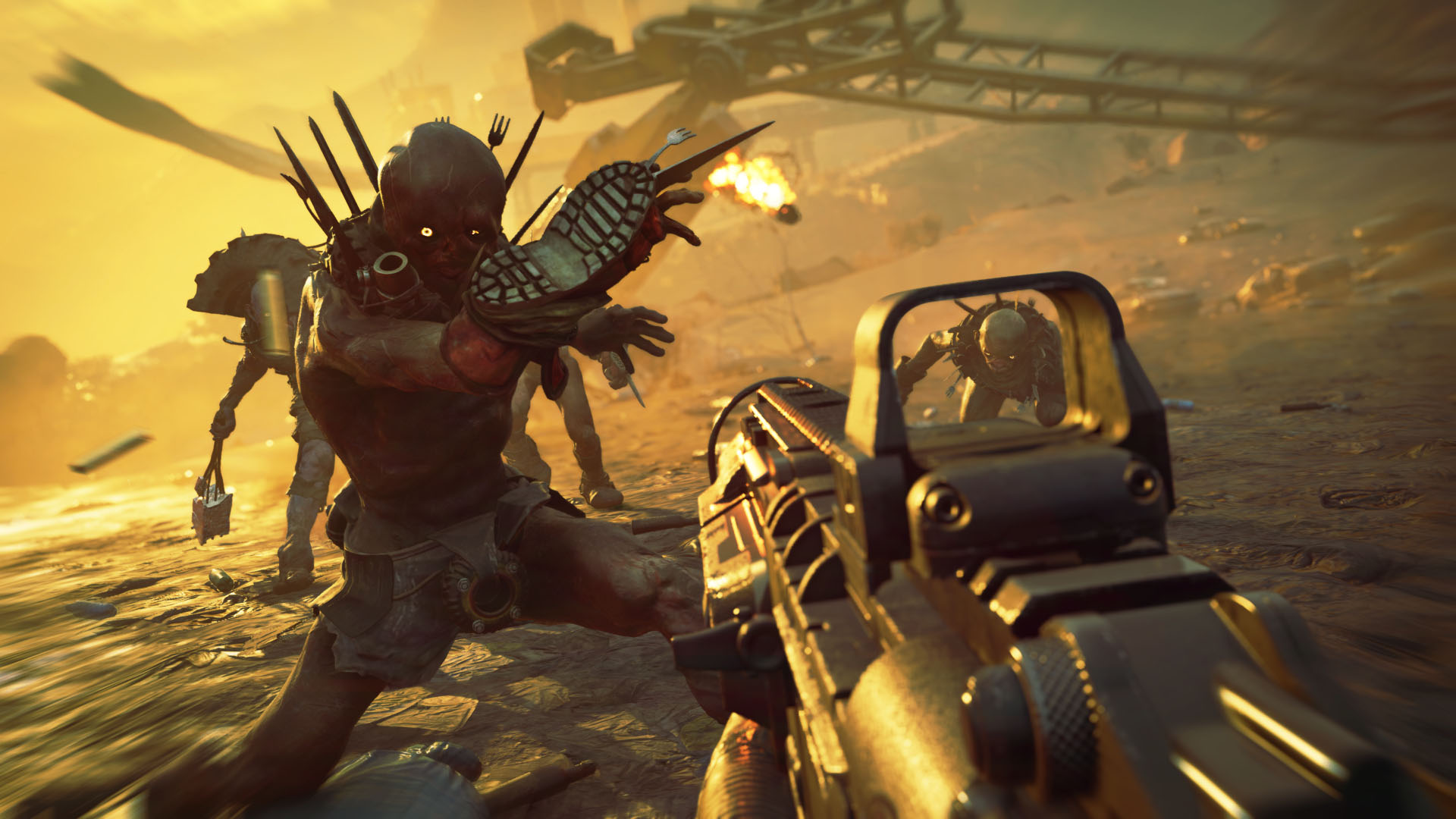
Right. Zip back to the beginning, using whatever cinematic rewind noise plays in your head in for such occasions. Here’s Greg. It’s our first meeting, and the cycle of escalating punishment is yet to kick in, but clearly he’s about to die in the most unnecessarily extravagant way. The reason I keep picking on Greg, you see, is that he’s doomed to eternally spawn – at a relative distance - out of an end-corridor doorway all on his own, and he’s pretty heavily armoured and can therefore take a lot of punishment. This, I conclude, makes him the ideal test subject with which to find out just how versatile Rage 2’s combat really is.
Starting out simple, I merely hurl a locked-on Wingstick at his head, allow it to churn away upon impact, and then use the resulting stun time to close the distance, sprinting and dashing right up into his face for a ballistic finisher. Job done. But I can do better. The second time we meet, I get evasive, letting Greg run in before dodging around to the side, to put him between myself and the edge of the third-floor mezzanine we’re fighting on. I unleash the super-powered melee punch I’ve been saving – like all my special, non-weapon abilities, it operates on a cooldown timer. It will evaporate a weaker goon on impact, but, as I hoped, it launches Sturdy Greg over the balcony intact. I hear a long, trailing scream and I do not see Greg again.
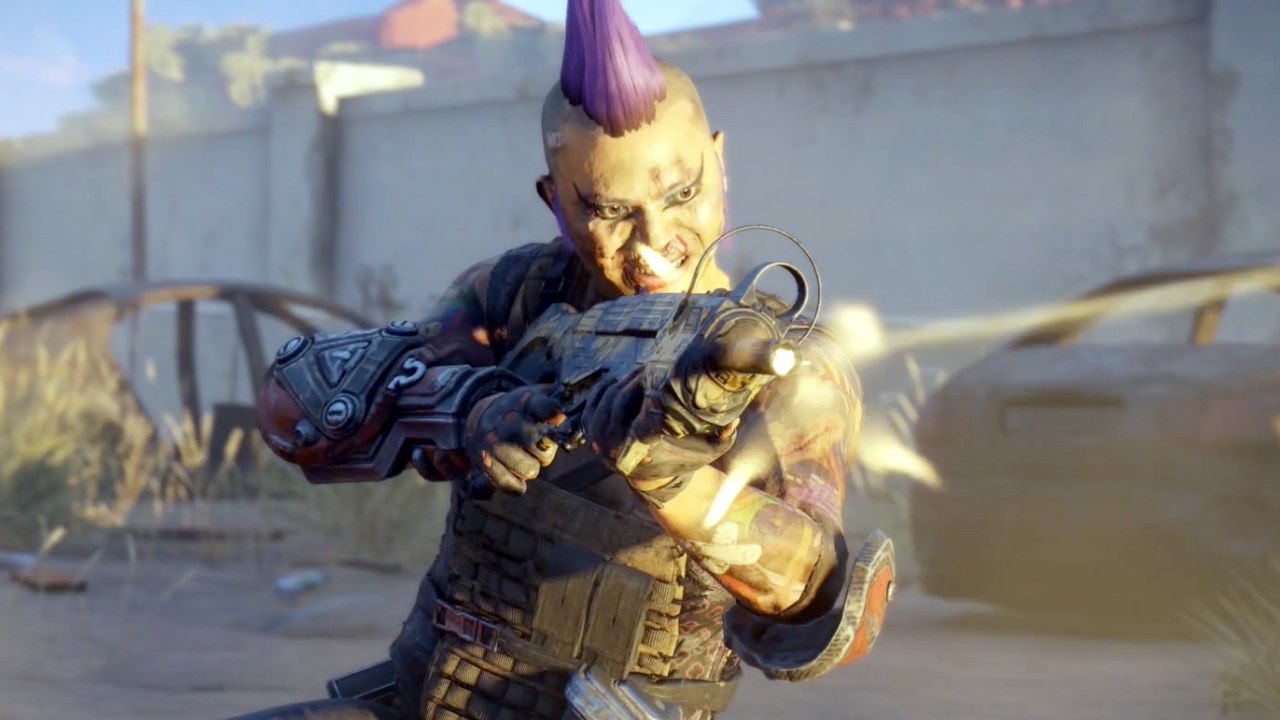
Encounter three? I use Greg’s momentum against him, judo-style. Letting him charge toward me, I jump up, air-dash forward, and spin around to drill him in the back with assault rifle fire before he even realises where I’ve gone, let alone has time to turn and react. Our fourth meeting is my favourite though. Experimenting with the nuances of cooked-up grenades – you can pre-charge Rage 2’s throwable, explosive treasures in order to have them detonate wherever and whenever you want – I master the art of lobbing a spud toward Greg and timing the fuse to go off just as he runs a few feet past it. As planned, the edge of the blast lifts Greg into the air and launches him toward me, hapless and flailing. I shotgun him back down to the ground, in far more pieces than he left it in. Trap-shooting confirmed as viable.
I feel slightly bad for Greg, but I will always appreciate his sacrifice. By being the right goon in the right place, he has taught me much about Rage 2. Our localised experiments have made all the difference in the world to my understanding of the intricate possibilities in play. It turns out that there are many.
Not that it’s even this simple, mind, because…
Rage 2’s kill-combo system is the key to real power

You can ‘simply’ leap, whirl, dash, evade, climb, and air-dash your way around Rage 2, and you can fair perfectly well in doing so. But you won’t be playing the optimum Rage 2. Not at all. You see, as well as two cooldown gauges for special abilities (which will be expanded to four in the finished game), I have an Overdrive meter to play with. When Overdrive is ready to go, I trigger it by hitting both bumper buttons together (much like firing one of Destiny’s super abilities) and get a limited - but really, really effective - window of super speed, extra damage output, and buffed resilience. Oh, and a cool, glitchy pink screen overlay. That bit is really important. Overdrive can clear a room in seconds, so you’ll want to make sure that it’s ready to go as often as possible. As such, you need to think in terms of combo-kills and violent momentum, all the time.
Chaining kills together is the best way to quickly increase the Overdrive meter, and so you’ll need to combine all the tricks and nuances I’ve talked about above to keep up the pace and maximise your multi-target destructive capacity at every opportunity. In fact, once this overarching conceit clicks, it makes a whole new sense of Rage’s many interlocking systems and the granular versatility of its combat. Without Overdrive, Rage 2 would still be a hell of a good Id shooter. With it, these systems gain a new, unified focus and purpose. Like every bit of understanding I gain over the course of my four play-throughs, the change this perspective makes is most apparent when comparing repeat runs of the same section of the demo.
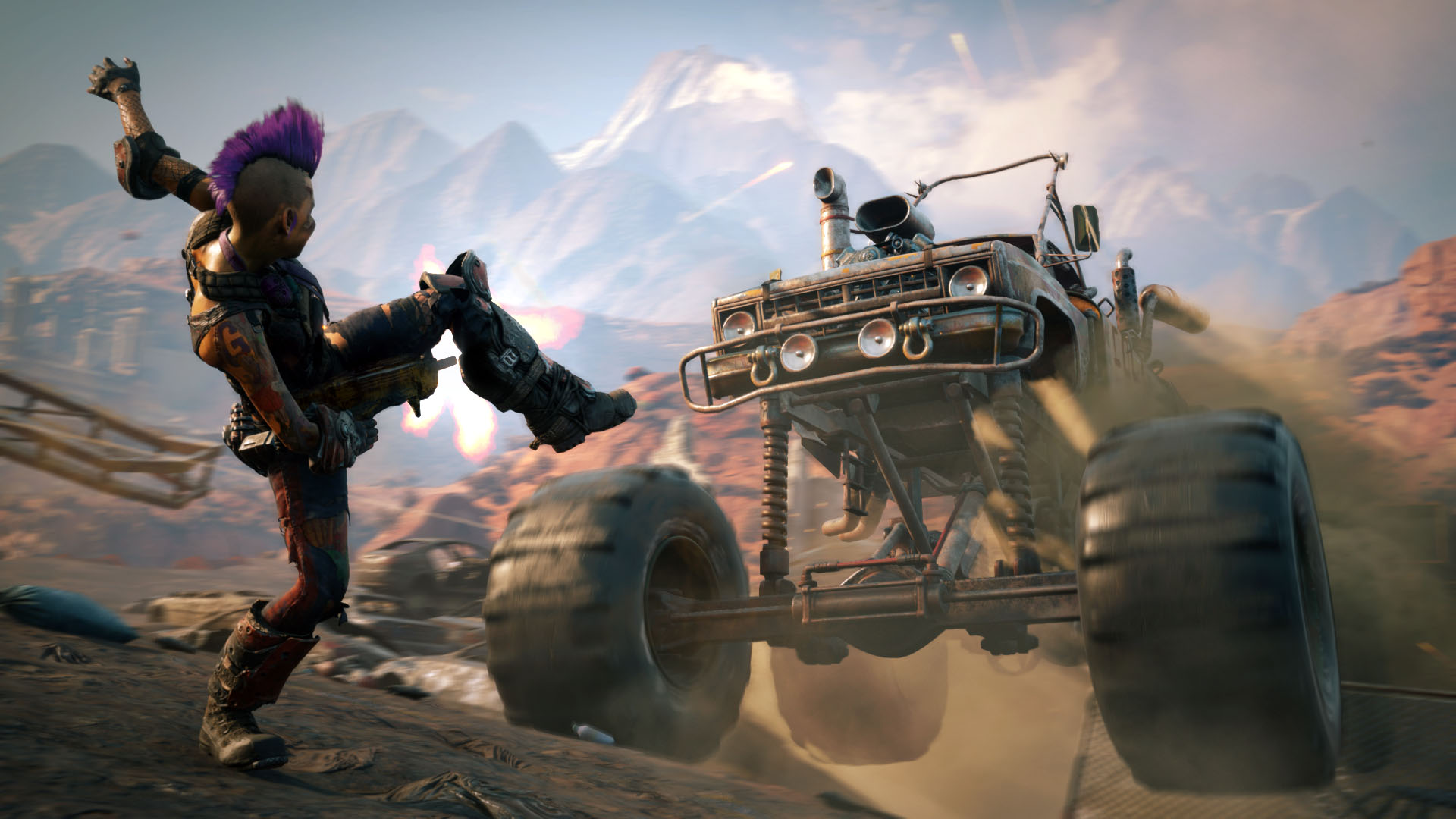
Take the final battle, for instance. An intensive, relatively enclosed pit-fight against dozens of desert punks, my first go is a successful if frantic spree of hit-and-run shooting, a whole lot of evasion, and more than a couple of instances of last-second healthpack use. Run four, in contrast, is organised. It has purpose and intent. I’m still gleefully slaughtering on the fly, but I’m making decisions in order to push toward a specific goal. Looking down from the floor above, I begin by dropping a cooked grenade toward one nearby group while launching my second, ground-pounding special ability in the direction of another. The grenade bursts before it hits the floor, wiping all of its targets, and showering them toward me as I land on the others. Three seconds, five kills, and the Overdrive meter looks happy. But I’ve already planned my next move, and the moment I’m back up, I’m dashing toward a new target, shotgun in hand.
My next set of movements aren’t designed simply to traverse the space between enemies, but to corral the AI together for another grenade multikill, or perhaps a barrel explosion, depending on which opportunity presents itself first. From that point on, I’m lobbing around the Wingstick to deal with one flank while I run in the opposite direction, using elevated platforms to hurtle past and above obstacles, and repurposing those air-dashes primarily to close in on targets rather than to dodge them. The end result is that I have Overdrive charged in a fraction of the time I did the first time round, and the rest of the battle is a formality. A really bloody, noisy, hot-pink, lead-spewing formality.

Immediately fun, cleverly brutal, fast, and excessively gory, Rage 2 feels like an Id game within seconds of picking up the controls. But with prolonged play revealed a dense stack of such thoughtful, gratifying intent? Then it just feels even more like an Id game.
It’s hard to gauge Rage 2’s overall promise until I can break the restrictions of closed demos and go exploring Avalanche’s open-world, of course. It’s certainly a beautiful and enticing place to behold from afar, promising multiple, contrasting, non-desert biomes and a host of different, tribal enemy behaviours. And the car combat looks deliciously weighty in video. On paper it sounds great, though that greatness is currently theoretical, alas. But in terms of the moment-to-moment FPS action? As far as Rage 2’s shooting goes, you can sign me up for a fifth go right now. Or at the very latest, as soon as Rage 2 releases in spring 2019.



